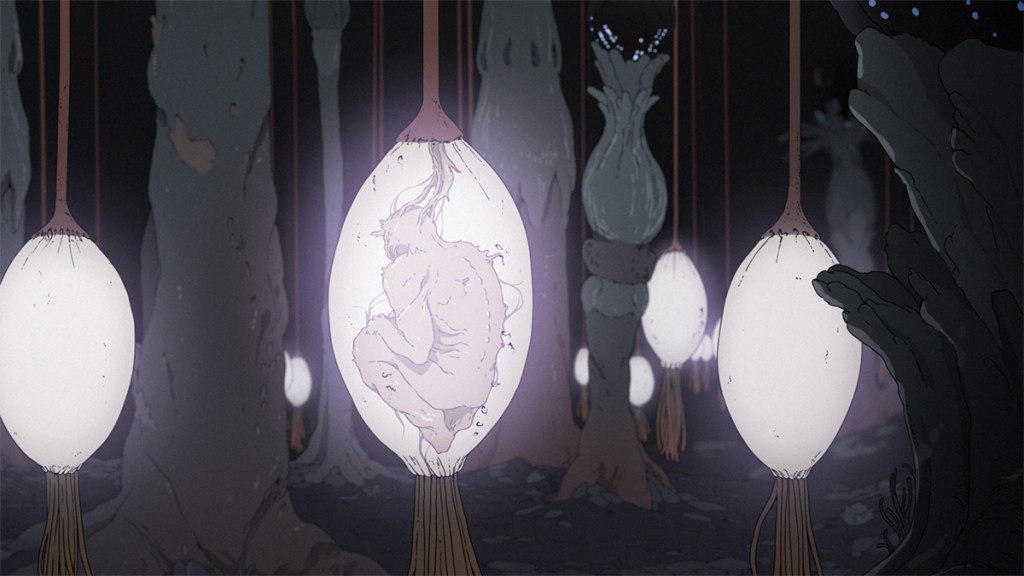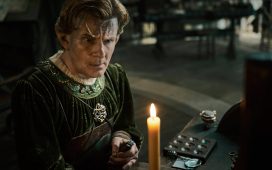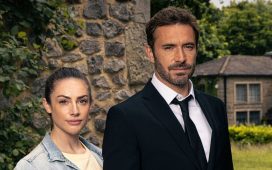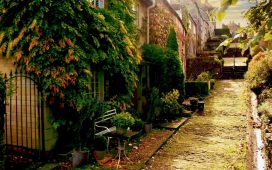Vesta’s vistas are at once familiar and awe-inspiringly foreign, teeming with creatures that look as though they’ve been plucked from the dreams of Leonardo da Vinci, Hayao Miyazaki and H.R. Geiger.
The depth and breadth of the show’s world-building, and the visually rich, cinematographic way in which it’s realised on screen, brings the planet’s intricate ecosystems and whispering wildernesses gloriously and convincingly to life. Intelligence, forethought and artistry crackles through the show’s every word and frame.
It’s hard to select a visual highlight from this world: hollow tubular monoliths with whole ecosystems inside them, underground caverns filled with mutagenic fungus that can mimic their prey and surroundings, parasites that puppet animals and humans alike like flesh marionettes…, but the sequence that really hammers home the beauty and complexity of Scavengers Reign centres on the life-cycle of a phantasmagorical flower.
Deep inside a dense, living hedge of solid, calcified pipes, one of the survivors, Ursula, by chance triggers the self-propagation of a plant that comprises both flora and fauna. The process that unfolds seems by turns natural, bio-mechanical, symbolic and nothing short of magical. Hollow tendrils unfurl from the plant and work to dislodge orbs of pollen from shallow dirt at the giant flower’s centre. The orbs are thrown into the air, where they remain, hovering and glowing. A wrinkled and wizened little creature, a strange hybrid of frog and walnut – no more than an inch or two tall – is plucked by its head from that same sandy dirt, before being placed gently on its feet in the middle of the flower. The walfrog transforms an orb into a ‘button’ that when pushed, activates the plant’s next stage of life in a bioluminescent light show. The little creature, its only task in this world now complete, gently collapses into a foetal position in the centre of the dirt as its corporeal body ages, withers and dies. A tendril reaches out to tenderly bury the creature beneath a layer of dirt, the lights blink off, and the flower closes in on itself, sinking back into the pipe.
This bold, profoundly beautiful sequence almost single-handedly justifies the show’s existence. It’s a bewitching feat of imagination, design, animation, and direction that speaks to some of the show’s key themes and ideas around harmony, balance, fate, free-will, and sacrifice for the greater good. Everything is contained within the mesmerising circumference of that one alien flower. Not just life on Vesta, or life on earth, but life – real and imagined, and everywhere across all possible universes. That flower will make you think about how short life is. How cruel. How beautiful. How our destinies boil down to becoming either the pollen or the button-pusher, but knowing that one day, each of our buttons must be pressed while understanding that the end is never the end.

Ultimately, Scavengers Reign reminds us that it’s not how life ends that’s important, but how it’s lived. We’re both a part of something greater, and greater than the sum of our parts, and, if we try our best to remember that, then perhaps the greater parts of all and each of us will echo into eternity. Two things are certain: no story ever truly ends; and we can’t allow Scavengers Reign’s story to come to an end.














